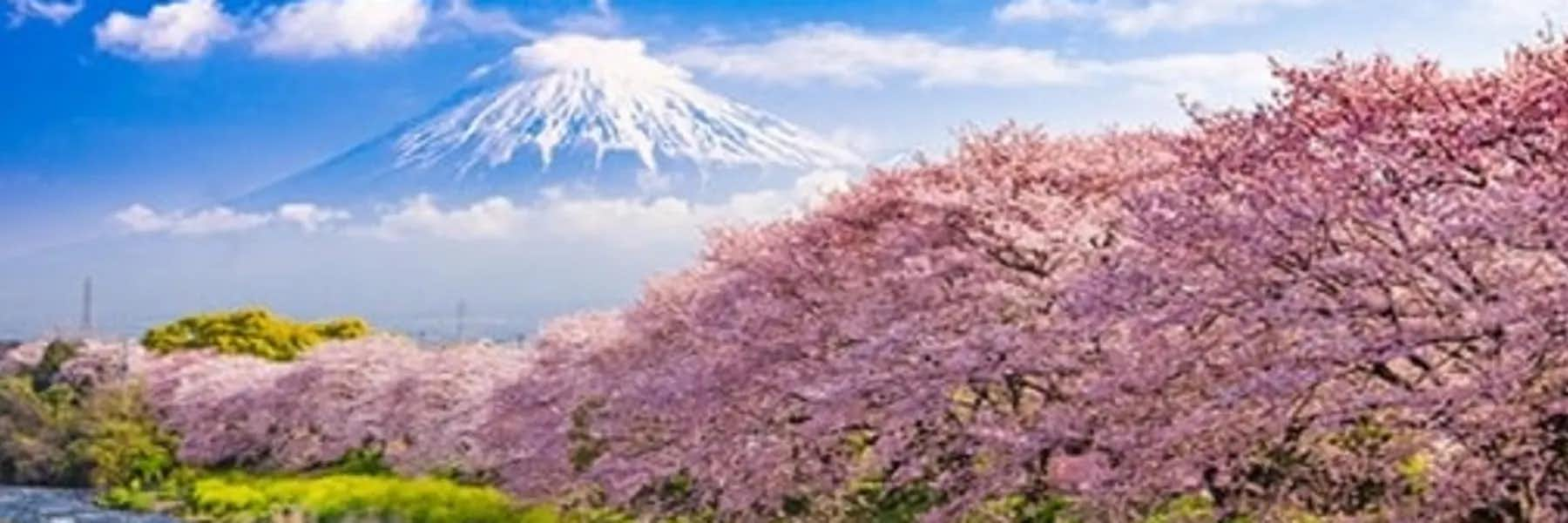Under the pink blossoms of a cherry tree grove, the gentle springtime sun shimmers through the branches. There’s a new warmth to the air that’s been missing in recent months. It invigorates the body and brings a lively energy to the people gathered in this corner of Japan. It’s spring, and Japan is out to embrace it.
The air smells of yakitori, fried squid, and cotton candy from the nearby food stalls. Snowcapped Mt. Fuji looms in the distance, and there’s an atmosphere of relaxed camaraderie among the locals, from toddlers to grandparents, who are celebrating the annual hanami (flower-viewing party) with beer, sake, or green tea. It’s a far cry from the picture of urban Japan—the flashing neon, packed commuter trains, and frantic pace of Tokyo— that many people think of when they picture this diverse Pacific archipelago. This is the Japanese countryside, the Japan that everyone should experience.
Do you want an immersive, sensory enriching experience in Japan—something more than a whirlwind tour? Perhaps you worry about the costs. But if you plan well, exploring Japan is rewarding and the cost reasonable. For the past few decades, the country has been struggling with deflation: Prices here have dropped or stayed the same, while the cost of living has likely been rising in the U.S. and Canada. That means that your comparatively strong dollar will get you mouthwatering cuisine, impeccable service, and a wealth of exotic cultural and social experiences.
I’ve been living in Japan for a quarter of a century, taking delight in this most rewarding of countries. It may appear mysterious or exotic to an outsider. But once you know how to navigate the country and its ways, you’ll find yourself falling for its blend of modern and traditional; its grace, friendliness, and the spectacular natural facets, such as hot springs in locations that range from subarctic to subtropical, and dormant and still-active volcanoes. Don’t forget the cultural aspects that are truly specific to this one place on earth: A blending of Shintoism, Buddhism, and Christianity, a cuisine that UNESCO has certified as an intangible cultural heritage, and a belief in providing excellent service without expecting tips.
Before leaving home, purchase one-way Japanese domestic flights from Japan Airlines or All Nippon Airlines for about $100. Japanese residents pay more. Low-cost Japanese airlines have recently been multiplying. Air Do currently offers flights between Tokyo and Hokkaido for less than $100. Shortly after leaving Tokyo, you can ski in the world-renowned powder of Niseko Ski Resort and bathe in a hot spring (with snowflakes falling on your head).
If your plans include covering large swathes of Japan, buy a national Japan Rail Pass. It covers almost all Japan Railways (JR) trains and many JR buses. Choose from a wealth of train experiences particular to Japan. Mind-blowing, futuristic bullet trains blow through space at almost 200 miles an hour. Quaint steam trains chug through bamboo forests and rice fields at a leisurely gait. The aptly named Pokémon with You train, a manga-decorated train, is one of many theme trains.
Fares for national rail passes purchased in Japan are $306 for one week, $481 for two weeks, and $602 for three weeks. But purchasing rail passes online before coming to Japan is 10% to 20% cheaper. Japanese residents cannot get these rates.
Japan has a wide variety of privately owned accommodation that ranges from high-class, traditional ryokan to fancy hotels to minkan (old farming homes) to Western-style B&Bs. Most hotels have set prices, but some family-owned businesses will provide big discounts for guests who stay more than a few days. All you have to do is ask. Many Japanese accommodations provide huge meals, but if you’re not a big eater or like to eat out, ask for discounts.
Two excellent websites are the Japan Travel, Friendly Discussion Group, and the Japan Travel Planning Group, on Facebook. Although I have lived in Japan for over 20 years, I check these sites for helpful tips before traveling out of my home region. Submit your questions, and you will get lots of useful answers.
Related Articles
Cheapest Places to Live in the World
